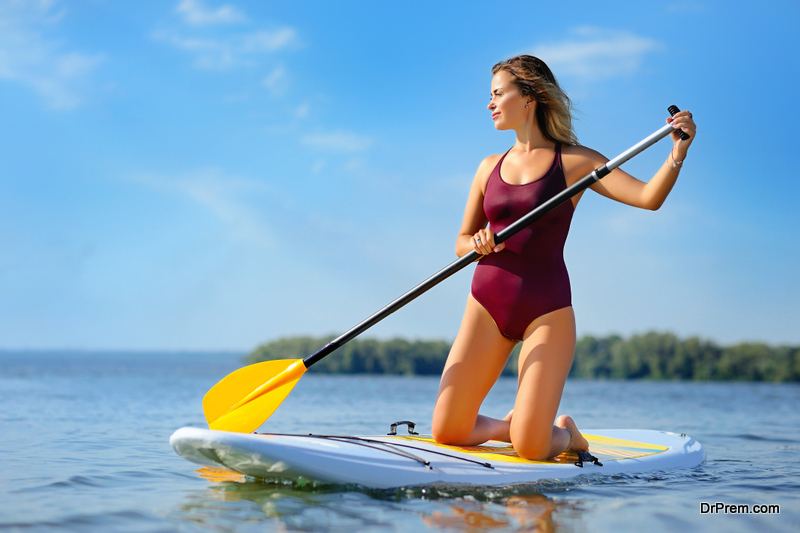Do you love the water? Does summer mean time spent at the pool or beach? If you’re a lover of all things aquatic, this post is for you. Did you know that your love of water sports can actually double as exercise? In fact, some of the best total body workouts are done on and in the water. Another added bonus is that several water exercises are considered low impact — making them perfect for people of all skill levels or those recovering from an injury. Are you ready to learn more? Let’s give into a few of the best aquatic exercises and what makes them so effective.
Swimming
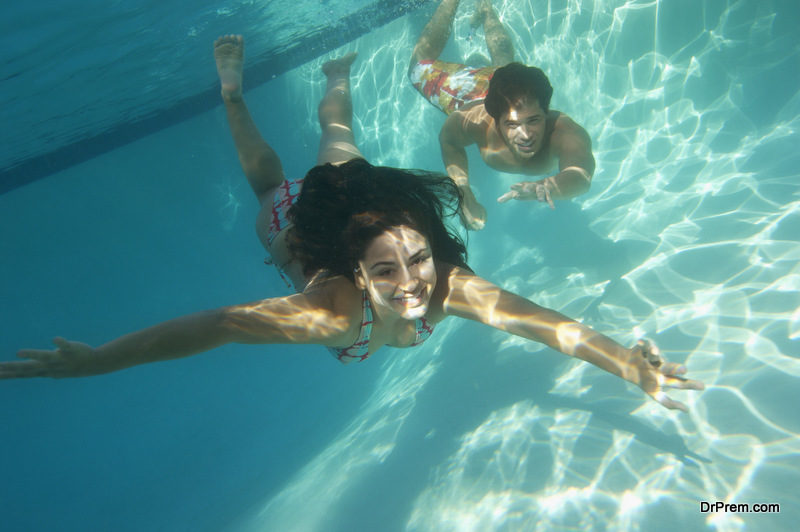 Let’s start with the most basic of aquatic exercises — swimming. Swimming burns more calories than any other exercise out there. Just ask Michael Phelps — 28 time Olympic medal winner. At one point, Phelps reported eating upwards of 12,000 calories per day to keep up with his vigorous training program. While you don’t need to be Michael Phelps to burn calories, this just goes to show you what an excellent form of exercise swimming really is. Not only does swimming burn an insane amount of calories, but it’s also a total body workout Depending on the type of stroke you use, swimming works your arms, back, legs, and core. Here are a few of the most basic (and effective) swimming strokes:
Let’s start with the most basic of aquatic exercises — swimming. Swimming burns more calories than any other exercise out there. Just ask Michael Phelps — 28 time Olympic medal winner. At one point, Phelps reported eating upwards of 12,000 calories per day to keep up with his vigorous training program. While you don’t need to be Michael Phelps to burn calories, this just goes to show you what an excellent form of exercise swimming really is. Not only does swimming burn an insane amount of calories, but it’s also a total body workout Depending on the type of stroke you use, swimming works your arms, back, legs, and core. Here are a few of the most basic (and effective) swimming strokes:
- Freestyle
- Butterfly
- Breast
- Back
Treading water alone is another great way to use swimming as exercise. You use your entire body to stay above the water. Not only does this strengthen muscles but it also increases your heart rate, burning calories and improving stamina. Always be sure to practice safety when swimming. If you’re new to swimming, be sure there’s a lifeguard on duty at all times. Don’t go out of your comfort zone and take swim classes to perfect your craft before jumping in!
Surfing
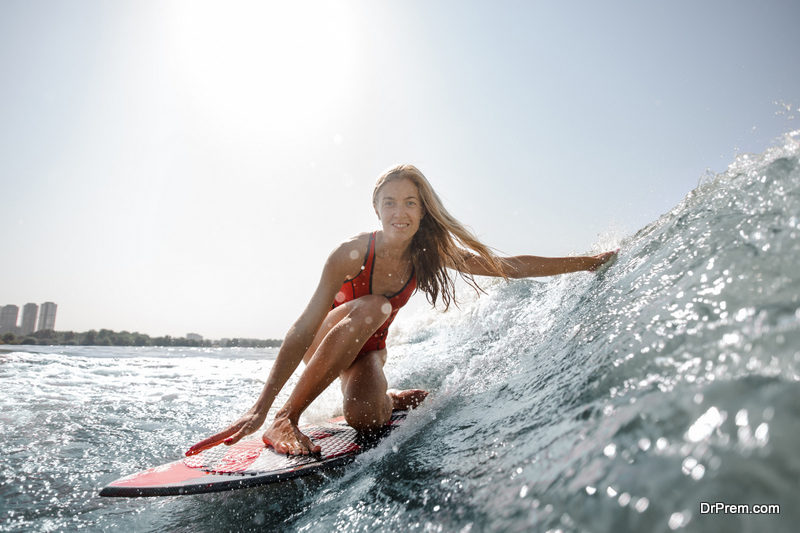 If you’re already comfortable on the water, surfing is an extreme sport that also doubles as an awesome workout! As you probably guessed it, surfing takes a lot of practice and balance. One of the best ways to improve balance is strengthening your core and abdominal muscles. Surfers also use their legs to remain steady on the board and their arms to both paddle through the water and lift themselves to a standing position. The act of surfing, navigating the waves, and staying balanced all require strength and endurance. Flexibility and mobility are two more important skills required to become a talented surfer. Did you know that flexibility and balance are connected? The more flexible and agile you are, the easier it is to balance. As a surfer, you’ll benefit from balance, flexibility, muscle strength, and improved coordination.
If you’re already comfortable on the water, surfing is an extreme sport that also doubles as an awesome workout! As you probably guessed it, surfing takes a lot of practice and balance. One of the best ways to improve balance is strengthening your core and abdominal muscles. Surfers also use their legs to remain steady on the board and their arms to both paddle through the water and lift themselves to a standing position. The act of surfing, navigating the waves, and staying balanced all require strength and endurance. Flexibility and mobility are two more important skills required to become a talented surfer. Did you know that flexibility and balance are connected? The more flexible and agile you are, the easier it is to balance. As a surfer, you’ll benefit from balance, flexibility, muscle strength, and improved coordination.
Paddle Boarding
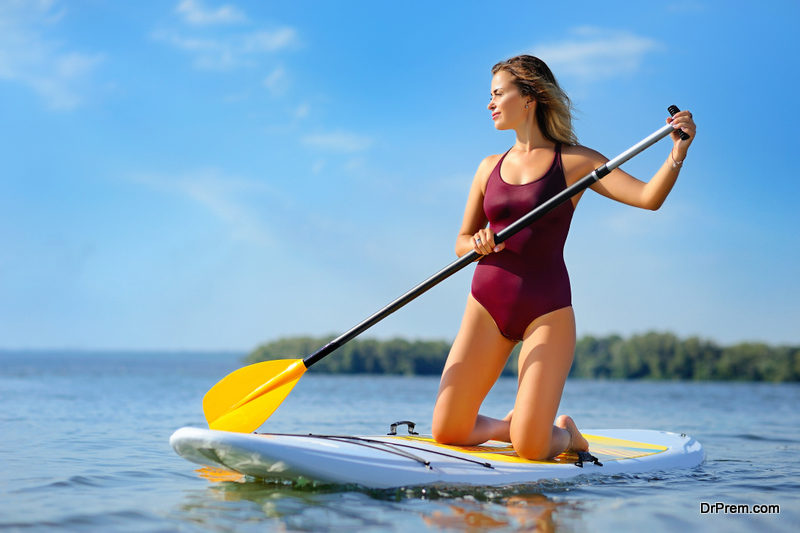 Paddle boarding uses a board similar to a surfboard but offers a much less strenuous form of exercise. Paddle boarding also focuses primarily on balance and core strength, but is performed in calm water without waves. Boarders also use an oar similar to that used during kayaking or rowing to help propel them through the water. If you’ve never tried paddle boarding, try going with a group of friends who can offer tips and tricks on how to stand and maintain balance.
Paddle boarding uses a board similar to a surfboard but offers a much less strenuous form of exercise. Paddle boarding also focuses primarily on balance and core strength, but is performed in calm water without waves. Boarders also use an oar similar to that used during kayaking or rowing to help propel them through the water. If you’ve never tried paddle boarding, try going with a group of friends who can offer tips and tricks on how to stand and maintain balance.
Once you’ve mastered this part, you can begin using the paddle to move through the water. Core strength will help you remain steady. The muscles in your legs will also stabilize you. Arm strength is a must for pushing yourself through the water. Not to mention, paddle boarding is fun! If you need a break, sit down, straddling the board. This is the perfect activity for a relaxing day on the water that doubles as quality strength-training.
Kayaking
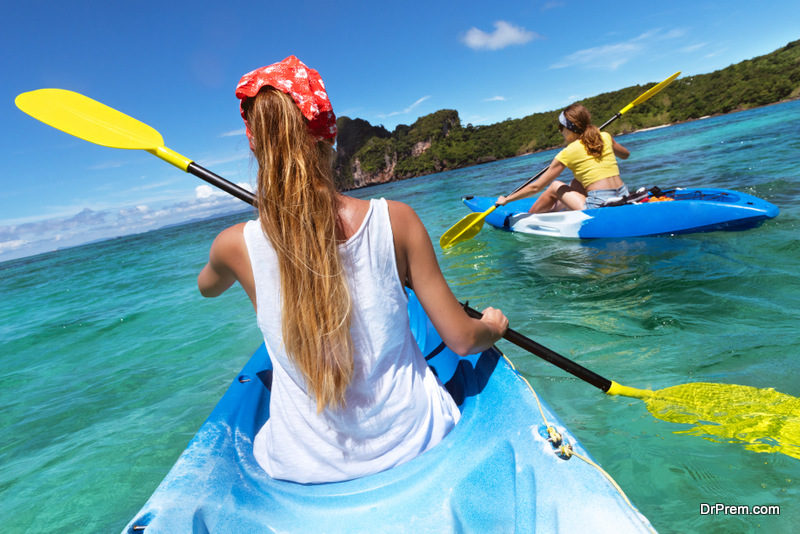 Another low impact water sport is kayaking. It’s no secret that rowing is an excellent form of exercise. Gyms like Orangetheory focus a large portion of their routine on the use of rowing machines. Not only does rowing help strengthen and define the muscles in your arms, shoulders, and back, but it’s also great for cardiovascular health. The act of rowing promotes a healthy heart and lungs. There are few machines that work as effectively as a rowing machine when it comes to cardio and strength training combined. Except, of course, for the real thing!
Another low impact water sport is kayaking. It’s no secret that rowing is an excellent form of exercise. Gyms like Orangetheory focus a large portion of their routine on the use of rowing machines. Not only does rowing help strengthen and define the muscles in your arms, shoulders, and back, but it’s also great for cardiovascular health. The act of rowing promotes a healthy heart and lungs. There are few machines that work as effectively as a rowing machine when it comes to cardio and strength training combined. Except, of course, for the real thing!
Kayaking requires you to row continuously to move across the water. Although the motion is somewhat different, the effects are the same. You will feel the muscles in your arms, back, and shoulders working, as well as your heart rate increasing. This is especially true if you take your kayak into challenging waters. Just be sure to always wear a life jacket and helmet, regardless of how skilled you are.
Water Aerobics
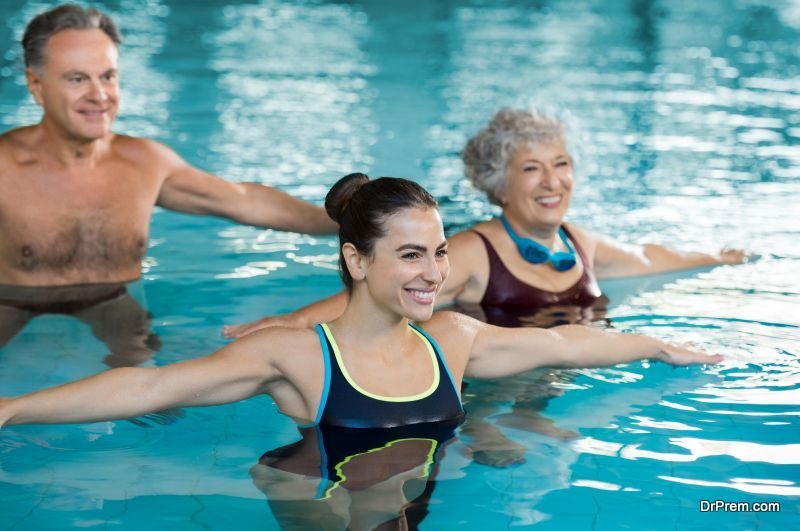 A classic aquatic exercise, water aerobics isn’t just for senior citizens! In fact, it’s extremely beneficial for fitness enthusiasts of all capabilities. If you’ve recently suffered an injury and are slowly returning to an exercise routine, your doctor and physical therapist will likely recommend low impact exercises. Your body is buoyant underwater. This means that it feels almost weightless, allowing you to move freely with minimal limitations or pressure on your joints, making it ideal for those recovering from an injury. Water also provides natural resistance.
A classic aquatic exercise, water aerobics isn’t just for senior citizens! In fact, it’s extremely beneficial for fitness enthusiasts of all capabilities. If you’ve recently suffered an injury and are slowly returning to an exercise routine, your doctor and physical therapist will likely recommend low impact exercises. Your body is buoyant underwater. This means that it feels almost weightless, allowing you to move freely with minimal limitations or pressure on your joints, making it ideal for those recovering from an injury. Water also provides natural resistance.
As you push your arms and legs through the water, you’ll feel a slight push back. This means you’re strengthening your muscles naturally, without the use of weights. The push back of water on your muscles is similar to using resistance bands when strength training. If you simply love being in the water, all forms of water aerobics are fun and help burn calories! You might even make a few friends at the pool!
Conclusion
Whether you’re bored of your current workout regime or are looking to break out of your comfort zone, these aquatic exercises are a great place to start. Not only are they fun but effective. You can learn more about what makes aquatic exercise so beneficial here. So, are you ready to get started? Grab your swimsuit and your sense of adventure and hit the water.
Article Submitted By Community Writer


